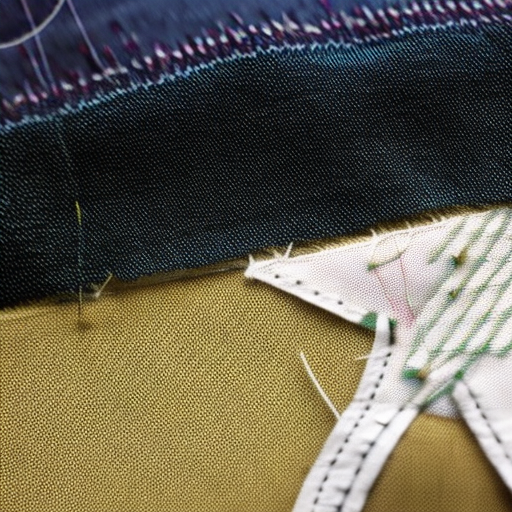
When it comes to sewing, one of the skills that can take your projects from average to professional-looking is the art of sewing invisible stitches. Whether you are working on a garment, a home decor item, or any other sewing project, mastering this technique will give your finished piece a seamless and polished appearance.
What are Invisible Stitches?
Invisible stitches, also known as blind stitches or slip stitches, are hand-sewn stitches that are virtually invisible from the surface of the fabric. These stitches are designed to join two edges or fabrics together without leaving noticeable thread lines.
Steps to Sew Invisible Stitches
- Prepare the edges: Before you start sewing, make sure the edges you want to join are properly aligned. Pin or baste them together to secure.
- Select the right thread and needle: Choose a thread color that matches your fabric. As for the needle, a thin and sharp one like a hand sewing needle or a milliner’s needle works best.
- Tie a knot: Tie a knot at the end of your thread.
- Start from the wrong side: Turn your fabric or garment inside out, and hide the knot within its layers to begin your stitch from the wrong side.
- Insert the needle: Insert the needle into the folded edge of the fabric or into the fold of a hem. Push it through the layers, leaving a small gap between the needle and the surface.
- Catch a tiny bit of fabric: Bring your needle up and catch a small amount of fabric from one edge. Then, move the needle across to the other side, repeating the process.
- Keep the stitches small: To make the stitches even more invisible, keep them small and close together.
- End the stitch: When you reach the end, make a small hidden knot on the wrong side of the fabric to secure the stitch.
- Iron the seam: Finally, press the seam gently with an iron to set the stitches and make them even more inconspicuous.
Uses of Invisible Stitches
“Invisible stitches are perfect for hemming garments, sewing linings, attaching bindings, closing pillow covers, mending tears, and much more.” – Expert Sewist
Invisible stitches have a wide range of applications in sewing. Some common uses include:
- Finishing hems on skirts, dresses, trousers, and jackets.
- Attaching linings to garments for a clean inside finish.
- Securing bindings or facings on collar edges, cuffs, or waistbands.
- Closing openings on pillow covers, cushions, or stuffed toys.
- Mending small tears or holes on fabrics without visible repairs.
Mastering the art of sewing invisible stitches might require some practice, but with time and patience, it will become second nature. The seamless, professional results are absolutely worth the effort!
Now it’s time to take out your sewing kit, grab some fabric, and start practicing this invaluable technique. Happy sewing!




